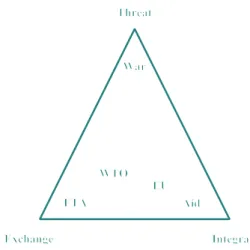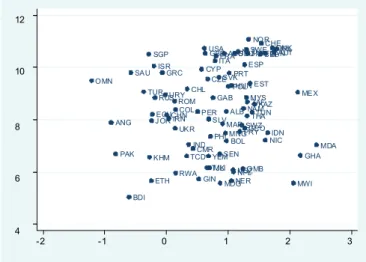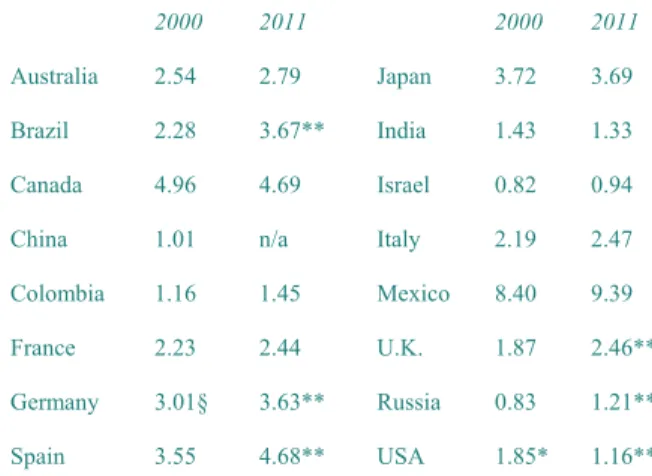Very few economics faculties offer an introductory course on the economics of war and peace. In what follows, I claim that this argument has been theoretically refuted by the bargaining theory of war. More importantly, I argue that the bargaining theory of war can be fruitfully incorporated by peace economists (and others) into their teaching, thinking and research on war and peace.
The bargaining theory of war is built on two deceptively simple propositions and a key question. Proposition 2: Peaceful resolution offers potential mutual gains for the would-be combatants in avoiding the costs of war. This is an important and disturbing implication of the The essay argues that the bargaining theory of war is also a theory of peace.
An underdeveloped feature of war negotiation theory is that war (or, more generally, violent conflict) and peace are not separate silos. Propositions 1 and 2 of the negotiation theory of war (ie, war is costly and peace offers potential mutual benefits) can be used when applying the peace negotiation model. Peace economists can use the theory of war and peace negotiations as a diagnostic tool, an intellectual X-ray.
The bargaining theory of war and peace can also be used to model and theorize about degrees of peace that emerge (and can be cultivated) far short of war, including durable peace and stable peace and how such outcomes can be invested in and maintained. can become over time and geographical space (and perhaps even across identity and ideological space).
Peace economics and peaceful economic policies
Seen in this way, the EU is a relative success story in terms of peace: exchange and integration relations dominate threat interactions. The distinction between productive and unproductive activities dates back to the time of the Physiocrats, and the concept is still valid today: Some profitable economic activities are not productive in themselves and therefore do not contribute to increasing the general well-being of society as a whole. To the extent that such activities use real resources, they result in a contraction of the set of availability available to the economy.” In 1990, William Baumol generalized the argument and explained how the historical development of societies depends on the balance between productive and unproductive activities.
In this regard, he notes that any innovation in military means and warfare does not contribute more to economic development than innovations developed in the traditional manufacturing sector would.2 The ideas presented by Bhagwati and Baumol emphasize the trade-off between civilian and military activities. . Although not directly destructive, rent seeking is detrimental to economic development in the long run. Within this context, a workable definition of peace can be advanced: Peace is an integrative institutional environment that favors productivity at the expense of unproductive activities due to democratic governance, balanced economic interdependence, and long-term productivity growth.
However, the pursuit of peace has always been normative, in the sense that it has been practiced by people who are deeply aware of the pathologies of conflict and who want to make it as free and productive as possible. Aware of the long-term deleterious impact of threat systems, I propose a new policy variable to highlight the balance between the deleterious factor of military spending and a long-term driver of development, namely investment in education. Thus, I suggest using the ratio of public spending on education to military spending (educ/milex) as a relevant policy variable.
In the long term, this could harm social welfare and also threaten the stability of the affected policies. Again, at first glance, the correlation appears to be strong enough: the higher the historical value of the educ/milex ratio (ie in 2000), the higher the current GDP per capita (in 2013). Further research will need to be conducted, but the educ/milex ratio may prove to be an adequate measure to capture the potentially harmful impact of the threat system resulting from excessive spending on.
In summary, the purpose of this article has been to offer useful definitions of peace and peace economics, both within Kenneth Boulding's general framework of exchange, threat and integrative economies and also in line with the classical, physiocratic distinction between productive and unproductive economic activities. In light of the inherently normative nature of the peace economy, proposals have been made for three types of policies, the pursuit of which can promote peace. Some General Remarks on the Economics of Peace and War.” Peace Economics, Peace Science and Public Policy.

War, peace, and development
Paul Dunne
The thawing of Cold War enemies in the mid-1980s significantly reduced military spending—halving the value of the global arms trade in major conventional weapons by the mid-1990s—but after 2001 (i.e., after 9/11) such spending increased again. This journal championed peace and security economics, so it is not surprising that this essay refers to many of the journal's pieces. Characterized by a belief that peace equals the absence of war, much of the focus of research has been on the provision of.
In this spirit, it is important to understand the determinants and effects of military spending. Recognition of the role the Military Industrial Complex can play in determining the level of military spending is linked to important research into the nature, structure and development of the global arms industry and related trade. Throughout the cold war years, there was a clear ideological bias toward research on the arms industry and trade, and in some ways this seems to be returning.
There has also been a marked change in the focus of the industry itself, which is illustrated by the rapid transition to information technologies, the use of unmanned aircraft (drones) and electronic (cyber) conflicts. Much of the debate has concerned the measurement of proxy variables used in various studies and the expansion of the range of potential conflict factors considered. Although more nuanced today, policies are still based on a partial understanding of the issues arising in the post-war security and economic environment. 18.
This includes not only the role of antagonists in war, but also the role of civil society and the informal economy and of the legacies of violent conflict. An important development is the creation of the Global Peace Index (GPI) by the Institute for Economics and Peace. It should be easy to conclude from this overview that economists have made important contributions to the understanding of causes, mechanisms and consequences of the peace and security sectors.
A theoretical approach to the supply and demand for peacekeeping." The Economics of Peace and Security Journal. Review Article: Is War Necessary for Economic Growth?” The Economics of Peace and Security Journal. Developments in the Global Arms Industry from the End of the Cold War to the Mid-2000s,” p.
The Development of Arms Market Concentration." Journal of Peace and Security Economics. Peacekeeping Across Ethnic Borders: New Lessons from the Past." Journal of Peace and Security Economics.
Peace economics in a changing world
Brauer and Caruso defined the subject as follows: “Peace economics refers to the economic study and design of political, economic and cultural institutions, their interrelationships and their policies to prevent any type of latent or actual destructive conflict within society, to reduce or resolve. and between societies.” According to them, peace economics is not primarily about preventing (state or communal) failure. It is about invulnerability, irreversibility and about the infallible, unconditional viability of peaceful social systems.” In a separate piece, Caruso goes further and discusses how peace economics could be crucial in the design of governance, trade and social investment policies that promote peace. The evolution of peace economics after the 1990s shifted the focus from what was essentially a binary debate between arms and butter to a more complex consideration of elements of a supportive framework for lasting peace.3.
A fundamental ethos of traditional peace economics has been the ability of the state or state institutions to invest in peaceful outcomes. The initial focus on fragile states has given way to a more relevant investigation of the states or conditions of fragility, as noted in the 2016 edition of the Organization for Economic Co-operation and Development's Annual State Fragility Report. The complexity of modern statehood, coupled with the transnational nature of violent conflict, calls for serious rethinking on the sources, nature and focus of peace-promoting expenditures.
Peace economists face complex and ongoing challenges, including including in their analyzes (1) persistent Just as scholars and practitioners struggled to understand the importance of peace economics in the post-Cold War era, so the new global realities today force man to review and rethink its role. From the perspective of a peace practitioner, this article reviews and challenges existing definitions of peace economics and makes recommendations on how to expand its scope to make it more relevant to today's changing world. For example, the UN deployment in the Democratic Republic of the Congo (known by its French acronym, MONUC) has existed for sixteen years, at an estimated cost of over $10 billion.
Contemporary peace economics could play an important role in shaping governance and economic development outcomes in fragile regions and countries. First, Boulding's comment that "all economics is peace economics and all economists are peace economists" is not particularly helpful. A reconceptualization of the peace economy in the light of the contemporary state, transnational phenomena and the growing influence of non-state actors is urgent and necessary.
Peace economics could incorporate these actors into a compelling theoretical framework in a much more deliberate way. Peace economics could deepen our understanding of the link between development and security and help refocus economic policy on the promotion of positive peace. Failure to progress in these areas could condemn millions of people to prolonged deprivation and misery and could confine the peace economy to the pages of history in a distant ivory tower.
AND S ECURITY J OURNAL
A journal of Economists for Peace and Security
EPS Publishing, 2017

